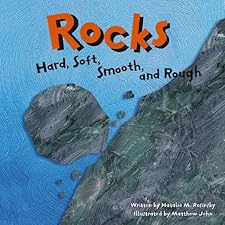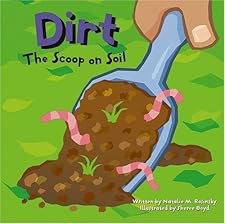(Monday is Earth Day. I love our Earth and want to protect it, but not for just one day of the year! I believe that Earth Day is every day! I try to teach a basic love and appreciation for our Earth and everything in it all the time. It should be a part of their daily lives, not something they focus on for a week.)
You can visit the NASA website to see some really amazing images of our planet from space! Click this link: http://visibleearth.nasa.gov/view_cat.php?categoryID=1484
CIRCLE TIME
Earth is made up of many parts. The oceans are the biggest part! They cover most of the Earth. There are also lakes, rivers, and streams which are water. The land is the next biggest part. Mountains, hills, rocks, sand, and dirt are parts of the land. There is also the air, also called atmosphere. The air is all around and goes all the way up into the sky. The clouds float on the air. Our Earth is big, but it needs our help to protect it. We must do our best to protect the Earth's resources.
ACTIVITY
Explore the Earth!
(see the ART activity below!)
Take the kiddos outside and explore!
Look for the sky. What color is it? Is there anything in the sky? Can you reach the sky?
Look for dirt. What color is it? How does it feel in your hand? Does anything live in the dirt?
Look for rocks. Are they heavy? How many different colors can you find?
Look for trees. How many different kinds can you find? How tall can they get? What lives in the trees?
Look for water. (this one may be difficult for you! you could create a small stream or pond in your yard using a hose and dirt) What happens when you put a rock in the water? What kinds of things live in the water?
Look for trash. Should trash be lying on the ground? Should it be floating in the water? How do you think it got there? What can we do to help keep our Earth clean and beautiful?
LETTER: I i for Important
Short I worksheet
READING
This week we are going to work on the short E sound. For this, we are going to make "magic spoons"! You will need some plastic spoons and a permanent marker. Focus on "en" and "et" words. Create 1 spoon with en written on it and another with et written on it. Then write the letters D, G, H, J, L, M, P, S, T, V, and W on individual spoons. This activity will show how the base sound of en and et remain the same and adding different beginning sounds will change what the word is. Help them pronounce en a few times. Then place a T in front of the en and ask them what sound T makes. Ask them to pronounce the T, then en. They just read the word TEN! Continue this practice by changing the first letter to make common words they know. It is best to work on en completely before moving on to et. Once you have worked on the words, see if they can create a word on their own!
Work on the en and et sounds on Starfall HERE.
Work on the short E sound on Readingbear HERE.
SCIENCE
Terrariums
Materials Needed:
2 liter plastic bottle
Clear tape
Pebbles
Dirt (potting soil)
Charcoal Pebbles (optional)
Sphangnum Moss (optional)
Plants
- Cut the bottle near the top but below the neck. Make sure your cuts are even so that you can tape the bottle back together once filled.
- Put a layer of pebbles in the bottom of the container. Make it about one inch thick. This will allow for good drainage.
- Put a layer of activated charcoal right on top of the pebbles approximately one half inch thick. This will filter the water. (This step is totally optional)
- Put a layer of Sphagnum moss on top of the charcoal. Sphagnum moss is a dried and wiry material and what this does is act like a barrier so the soil does not slip down into the rocks at the bottom. (This is optional but recommended if you want a cleaner and sharper looking terrarium)
- Put a layer of soil on the top of all of this. The layer should be at least two or three inches thick but you can vary this according to the size of your container.
- Poke small holes into the soil and transplant your plants into the container.
- Water it a moderate amount and tape the top of the bottle back on. The lid should remain off. Now just monitor it over the next few days. If it needs more water then add.

Succulents or cacti are your best bet for ease of care and durability!
This is an excellent activity for kids to see what is going on under the ground where plants are growing. This is something you can keep in your classroom for an extended time to give them a "job" of taking care of it. Each week you can assign 1 child to water the terrarium and rotate.
ART/CRAFT
(I try to use recycled materials in many of the arts and crafts that we do!)
Art: TP Tube Binoculars
**Make these BEFORE doing the "Exploring the Earth" activity!
Materials Needed:
2 TP tubes per child
Tape
Yarn or other thick string
Allow the children to decorate their TP tubes. Once they are done, tape their tubes together. Poke a hole through each tube on one end and string the yarn through. Make sure it is long enough for them to put around their necks to hold their binoculars in place. When you go outside to Explore the Earth, use the binoculars to "help" you see!
(If you aren't comfortable with the kids putting yarn around their neck, omit this part of the activity)
Craft: Pet Rocks
Materials Needed:
1 rock for each child (find them or you can buy them at hobby shops)
Paint
Stickers
Feathers
Yarn
Glue
Googly Eyes
Give each child their rock, or allow them to choose one. Tell them this is their special rock and it will be their pet! Allow them to decorate their rock however they choose. Once done, ask them where their pet's eyes should be and help them attach the googly eyes to the rock.
Rocks are an important part of the earth and now this one is theirs! Try to set up a place where their rocks can "sleep" during the day!
MATH
Earth Puzzle
This is from DLTK's website. http://www.dltk-kids.com/t.asp?b=m&t=http://www.dltk-kids.com/crafts/earth/images/cpuzzle2.gif
Print the puzzle out and cut out the pieces. Allow the kids to put their Earth back together.
Fishing For Numbers
Water is a big part of our Earth! Fish live in most of the water around our world. We can use this to do a little math practice!
You can use refrigerator number magnets, or you can make your own by gluing small magnets to foam numbers. You will also need a fishing pole. To make one, use a sturdy stick from your yard or buy a long dowel from a hobby shop. Tape a string, yarn, twine, or whatever else you have to the end so that it hangs down about 3-4 feet. Attach a large paperclip to the end of your string.
Place the numbers in a large bowl, a platic wading pool, a baby bathtub, or a large box. Allow the children to drop the end of their fishing pole into the "water" where the number fish are. Ask them to say the number they pull up. Then place it on the table. When the next child pulls up a number and says it, ask them to place the number where it goes in relation to the first number. Continue this through all the numbers.
BOOKS

Available on Amazon:
http://www.amazon.com/Earth-G-Brian-Karas/dp/0756989264/ref=sr_1_11?s=books&ie=UTF8&qid=1365773902&sr=1-11&keywords=earth
"Climb aboard a giant spaceship . . . the Earth! In glorious art, G. Brian Karas illuminates our Earth and its cycles and does a brilliant job of making the concepts of rotation and revolution understandable. As you travel, watch shadows disappear into night, and feel the sun on your face as winter turns into spring. All these amazing things happen because the Earth is constantly in motion, spinning and circling, gliding and tilting. As passengers of the Earth, our voyage never ends!"

Available on Amazon:
This book will aid your discussion about rocks and what they are all about!

Available on Amazon:
Helpful when discussing dirt this week.
MUSIC
This Land
This land is your land
This land is my landLet's work together
To make it better
From tall green forests, to clear blue waters
This land depends on you and me
COOKING
Earth Snack
These are a different take on Dirt Cups!
Ingredients:
Chocolate Cheerios, ground up
Chocolate Pudding
Blue Jello
Coconut, died green
Place the pudding on the bottom of the cup. Sprinkle the ground up Cheerios on top to make the dirt. Add a small amount of blue Jello on one side of the cup for the water. Sprinkle a little of the green coconut on the other side. It should look like Earth with land, grass, and water!
(I had to use blue frosting in the picture, the Jello wasn't photographing well! It works too.)









No comments:
Post a Comment